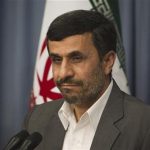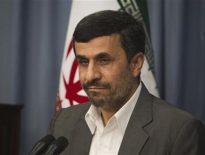(Reuters) – India’s central bank left interest rates and required bank reserves unchanged on Monday, defying widespread expectations for a rate cut and warning that relaxing policy could worsen inflation. Bonds, stocks and the rupee all fell.

The Reserve Bank of India kept its policy repo rate unchanged at 8 percent and left the cash reserve ratio for banks at 4.75 percent, putting the onus on the government to take measures to revive flagging economic growth.
“Further reduction in the policy interest rate at this juncture, rather than supporting growth, could exacerbate inflationary pressures,” the RBI wrote in its mid-quarter policy review.
India’s benchmark 10-year bond yield rose 9 basis points to 8.43 percent from levels before the announcement, while the new 10-year bond yield rose about 5 basis points.
The main BSE index erased gains before the decision to fall 1.1 percent, while the rupee weakened against the dollar to 55.60/62 from around 55.35-55.40 before the decision.
“The Reserve Bank of India’s action is clearly disappointing,” said Sujan Hajra, chief economist at Anand Rathi Securities in Mumbai.
“Inflation remains a concern, but the slowing growth needed at least a 50-basis-point rate cut. The RBI will have to ease sooner or later, otherwise there will be further challenges to growth,” he said.
After cutting its policy rate by 50 basis points in April, the RBI had been widely expected to leave rates unchanged in June.
But global and domestic economic conditions have deteriorated sharply since then, driving expectations that India would cut both interest rates and the cash reserve ratio.
India’s March quarter economic growth of 5.3 percent was far worse than expected and the weakest annual pace in nine years. The data sparked calls from industry for immediate action to lift an economy that Standard & Poor’s says could be the first BRIC nation to lose its investment-level credit rating.
Meanwhile, April industrial output figures last week suggested little pickup in economic growth heading into the current quarter.
The government is politically hamstrung, so is unable to drive reform and its deep fiscal deficit leaves it no room to provide stimulus spending at a time when the euro area debt crisis is weighing on the global economy, a factor set to dominate a G20 meeting in Mexico on Monday and Tuesday.
LITTLE HEADROOM
However, RBI Governor Duvvuri Subbarao had little room to maneuver after May benchmark inflation rose to 7.55 percent, below double-digits from last year but still highest among industrialized countries and the BRIC group of Brazil, Russia, India and China.
“While growth in 2011-12 has moderated significantly, headline inflation remains above levels consistent with sustainable growth,” the RBI said.
Both China and Brazil have cut rates this year in order to support growth.
“Unless the government takes steps on fiscal adjustment, the RBI is not prepared to cut rates. Based on this document, there’s unlikely to be a rate cut in July,” said A. Prasanna, economist at ICICI Securities Primary Dealership in Mumbai.
Investors and companies have long called for India to implement pro-growth policies that would spur investment and help remove bottlenecks in the economy blamed both for restricting growth and keeping inflation high.
HSBC economist Leif Eskesen said the RBI’s decision to hold fast was the right one.
“A significant portion of the slowdown in growth is because of supply constraints, and a cut in monetary policy rates or even the cash reserve ratio is not going to make much impact on growth,” he said.
On Friday, India’s ruling Congress party named Finance Minister Pranab Mukherjee as its nominee for the largely ceremonial post of president, ending a protracted political drama that had exposed the weakness of the coalition government.
With no obvious successor, Prime Minister Manmohan Singh, 78, could take charge of finance for now, a source close to the finance minister told Reuters. As finance minister during India’s balance of payments crisis in 1991, Singh was the architect of reforms that spurred accelerated growth.
“There’s hope that once the presidential election is over, and there is reshuffle at the finance ministry, the government may take some action on reforms, and on subsidies. But, the July policy of the RBI may come a little early before the government can take steps,” Prasanna said.
(Editing by Neil Fullick)





